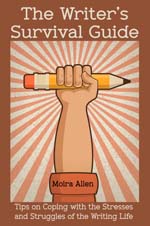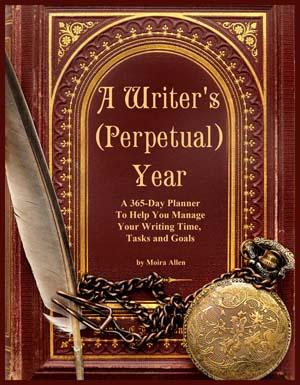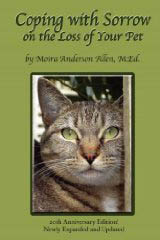 Your Guide to a Successful Writing Career
| |||
|
by Penny Ehrenkranz
Creating your fantasy world means building a world based upon reality and making sure that your reader knows the rules of that world. Your characters must remain true to those rules throughout your story. For your readers to accept and continue reading your story, they have to believe in your world and accept what is happening to your characters. J. R. R. Tolkien begins his "Lord of the Rings" series with The Hobbit, by creating a world so real that it has become a classic upon which so many others are based. Tolkien brought us Middle-earth and the lovable hobbits, with incredible description and attention to details. The story contains all the elements of a traditional fantasy with a bumbling hero, an enchanted talisman, dark magic versus the good wizard, and, of course, the quest. How do you go about creating a reality that readers will accept as readily? There are several things to take into consideration. Your setting must be believable. Characters should dress appropriately for the period of your story as well as use weapons appropriate to your world. If magic is involved, you should define the rules of magic and stick with them throughout your tale.
Defining your locale can be a good place to start. Ideas for settings can come from newspapers, magazines, TV shows, a walk in the woods, or a drive through the city. It may be helpful for you to make a physical map of your world. Take a large piece of paper and make a rough sketch of the city in which your action takes place. Include street names, inns, the palace, houses of ill repute -- anything that will involve your protagonist or your antagonist. The more detail you insert, the better you'll know your setting. If you want your action to take place in a rural location, lay out farms, travelers' way stations, outlying estates. Include anything that will bring your story to life for your reader. Orson Scott Card began his fantasy novel, Hart's Hope, by designing a map. In his book, How to Write Science Fiction and Fantasy, he describes beginning with a doodle that soon turned into a detailed map a city's walls, complete with entrance gates. With this beginning, he went on to decide who could go through which gate. Next he created a city in which magic prevails. Knowing that there is a price for magic, he then decided that the city was ruled by a mortal who killed her own child to gain power to bind the gods. His protagonist undoes the ruler's power by absorbing that power without being able to use it himself. What began as a doodle led to a city (and a story) rich with detail. Instead of a map (or in addition to it), you may prefer to jot down descriptions of places you will need to use in your story. Include details about the building materials used in homes, foods eaten by your characters, plants that grow in your world, clothing worn by your characters, even the animals found on your world. The more details you jot down, the better you'll be able to track how your world operates. In my own short story, "Iceman" (THE TALE SPINNER, Vol. 1, Issue 1), I gathered information from a National Geographic article about a mummy found frozen in the ice. I wrote down details from the nonfiction article to create my fantasy world, in which a woman brings her frozen fiancé back to life. The magazine article helped me describe the clothing my characters wore as well as tools they used. This basis for reality gave the story credibility.
Magic is often the key in fantasy. When you decide to bring it into your story, you must first decide how much exists and who has it. After you decide who has the magic, you need to decide where it originates. There are several common sources: the gods, nature, sacred places, plants and animals, artifacts, and innate talent. In Terry Brooks' "Magic Kingdom of Landover" series, wizards and witches have innate power. The only mortal with power is the king, who is protected by a magic talisman. The power of the talisman is known only to the king for most of the series. Before his enemies can destroy him, they must determine his power and find his weaknesses. Your society will be structured around the question of who has magic and who doesn't. If magic users aren't in charge, they may be servants of those with economical power. This is true in the traditional Arthurian legend, where Merlin is the subject of King Arthur. Merlin has the magic, but he uses it at the bidding of Arthur. Is the magic in your story a gift treasured and respected by the general populace, or is it feared as an evil? The attitude of the people in your world toward magic will help you in structuring your society. Piers Anthony's "Apprentice Adept" series offers are two parallel worlds. One -- Phaze -- has magic, while the other, Proton, has science. Only people without a double in the other world can cross freely between the two worlds. There are seven adepts with special magical powers on Phaze. On Proton, only Citizens have economic power. On each world, the residents without power fear those who do. The protagonist, who has magic on Phaze but is a serf on Proton, has the job of bringing these two worlds together. Since magic is feared by the hero's closest allies, he must meet and overcome significant obstacles to achieve his goal. Be sure to determine what the nonmagic users in your society do to compensate for their lack. Depending on your choice for the source of your magic, you have a number of options. If magic comes from the gods, your non-magic population may engage in sacrifices and prayer to obtain the coveted magic. If the magic is evoked through the use of artifacts, there may be fights and quests to seek out the most powerful talismans. In David Eddings series "The Tamuli," magic lies both in the gods and in the Bhelliom, a jewel of incredible power. The protagonist, Prince Sparhawk, wields this jewel in a mortal battle against the evil god Cyrgon. Throughout his ongoing battle against Cyrgon, Sparhawk is aided by the child god, Aphrael. Here, power lies with the gods and those who are part of the gods' plans. No matter which source of magic you choose, there are a number of variables to consider. Be sure to write down who does what to whom and how it is done. Then, the next time magic appears in your story, follow the same rules. If you don't, your reader will become confused.
While you are creating your world, pay attention to the details that bring realism to your story. Traditional fantasy stories are often set in a pre-technological society. Urban fantasy, however, takes place in modern settings or switches back and forth. Stephen King's "Dark Tower" series switches between a fantasy world and a modern setting. Here the protagonist is able to travel through doorways between worlds to bring back people who can help him complete his quest. Although Stephen King is generally known for his horror stories, in this series he creates a fantasy with a protagonist who is the epitome of the lone hero from ancient myth to frontier legend. Take the time to learn about different weapons and what damage they can do. Remember, there are long knives and short knives, broad swords and dueling swords, daggers and hunting knives. Each type and style was designed for a specific purpose. If you have your 4'11", 100-pound heroine swinging a broadsword, your readers will be instantly turned off. Unless she has incredible powers, or her broadsword is wielded through magic, she won't be able to handle such a heavy sword effectively. If your fantasy is an urban fantasy, learn about handguns from your local gun shop. The state medical examiner's office can help you with details on death and dying. Remember, the more realistic details you use, the more believable your story becomes. What your characters wear is just as important as their weapons. Traditional fantasy characters generally wear clothing typical of the Middle Ages. Obtain a reference book on the Middle Ages for accurate descriptions of clothing types and styles for the period you have chosen for your tale. Do some research at the library or on the Internet. You'll be surprised at some of the "modern" conveniences that appeared before the Middle Ages. Look to ancient Egypt for things like eyeliner, eyeshadow, creams, oils, and moisturizers. China has used fireworks for centuries. If something existed somewhere prior to the Middle Ages, you can feel safe introducing it into your story. Be sure to check your facts; talk to experts in the field if you can; and lastly, allow your characters to do real things like eating, sleeping, and scratching their bug bites. Your world won't be real to your readers until it's real to you. The only spellbook you'll need to create your magical world is the one you write yourself.
This article may not be reprinted without the author's written permission. Penny Lockwood Ehrenkranz has published more than 80 articles, 60 stories, two e-books, a chapbook, and her stories have been included in two anthologies. She writes for both adults and children. Her fiction has appeared in numerous genre and children's publications and non-fiction work has appeared in a variety of writing, parenting, and young adult print magazines and online publications. Visit her online at https://pennylockwoodehrenkranz.yolasite.com/. |
| ||
| |||




